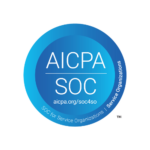
The crazy December dash of donors through the calendar year-end is almost over, so come January, you will have a lot of donors to thank. Are you ready to properly steward them? Of course, you will send them their tax receipt, which will likely have a message of gratitude, but that is an IRS requirement. You will probably send a general thank you message from someone in leadership at your organization, but one could argue that is just being polite. What are you doing to ensure your donors feel as if their gift is truly valued by your organization?
Here are a few tips to making your stewardship shine in the New Year.
1. Segmentation. Are all your donors receiving the same thank you message from leadership regardless of the type or amount of their gift? Although it is more work, you should be varying your messaging according to the donor. One-time memorial donors and tribute donors do not expect much from us, but there could certainly be a value add to doing special messaging for first time grateful patient donors who are more likely to stay in your pipeline.
Are your leadership annual giving donors receiving the same stewardship as the rest of your annual giving pool? Time to level up your stewardship for this important group. We are all staffed different, but if you do not have gift officers focused on leadership annual giving donors, then look at who else could be making thank you calls in the new year. Thank you calling is a wonderful way to increase the relationship of these donors with the organization. (For more on engaging in the leadership annual giving space, refer back to my September blog.)
Do you have specialty care centers at your organization? Look for opportunities to vary the message based on specialty. Donors to a children’s hospital are looking for different messaging than those who give to a cancer center. Make sure they are receiving content that will resonate with them, for example, a children’s hospital donor may want to know how many children are helped by music and art therapy programs whereas a cancer center donor may appreciate hearing about the newest treatments and preventions. For very large and diverse healthcare systems, this can be a challenge because there are so many ways to segment, but the important thing is to find what will be most impactful to your donors.
2. Be creative. We like thank you letters because they are easy to crank out, but they do not necessarily stand out for our donors. Try to think of new and innovative ways to connect with donors. From cute thank you cards with premiums, to Thankview videos featuring people who can show the impact of giving, to quick thank you texts with heart emojis. There are so many ways to create thoughtful and engaging stewardship content beyond the traditional thank you letter.
3. Vary the channel. Just as with annual giving, it is important to use a variety of channels for our stewardship messaging. Text messages, targeted social media ads, and email are all great ways to engage donors where they are at these days. Do not get me wrong, mail is still an option for stewardship communications, but I would encourage you to use it strategically. If someone is hand-signing a note, or if you are looking to send a more visually impactful piece, then mail is a great option, but if it is just more of the standard, form thank you letter, you may want to just email it out.
If you do not yet have your stewardship plan set for January, now is the time to get it locked down. If you already have your stewardship plan in place, you still may want to take some time to revisit it to make sure you are making every effort to provide impactful stewardship for your donors. They felt strongly enough about the mission of your organization to make a gift, now it is time for you to show them how much their gift is deeply appreciated. If you do it well, you will have many loyal donors for years to come. Happy Holidays and Happy New Year!
—-
ABOUT THE AUTHOR:
Ann Fisher is a fundraising professional with more than 25 years of experience in annual giving. Ann began her career at Hospice of Michigan where she developed numerous skills from data base management to grant and appeals writing. From there she moved on to University of Detroit Mercy where she spend nearly 20 years in annual giving, eventually becoming their Executive Director of Annual Giving and Data Services. During her time at Detroit Mercy, Ann was instrumental in introducing new initiatives like online giving and crowdfunding while also improving the ROI in phone and mail and coordinating the University’s President’s Cabinet leadership giving program. Ann then spent two years at UC San Diego as Senior Director of Integrated Marketing, where she launched their first Day of Giving and restarted their grateful patient giving program. Ann currently works at Michigan Medicine where she serves as Director of Annual Giving, Leadership Annual Giving and Data Services. In 2021 Ann and her colleagues were selected as CASE Platinum Award Finalists in the Best Practices in Fundraising Award for their Nurses Week Campaign, which raised over $80,000 from 1,300 donors during the height of the pandemic. She has also served as a judge for the CASE Circle of Excellence Awards. In her spare time, Ann is an avid runner and has run several half and full marathons as a charity runner to raise money for various causes.
—-
ABOUT GOBEL SUBJECT MATTER EXPERTS: GOBEL Subject Matter Experts are healthcare philanthropy professionals working in some of the top shops in the country, sharing best practices and insights. For more information about GOBEL’s Subject Matter Expert program, or to suggest a topic for coverage, email jmoody@gobelgroup.com.
